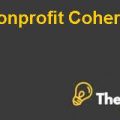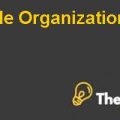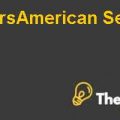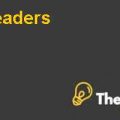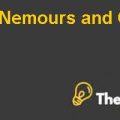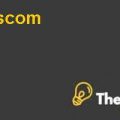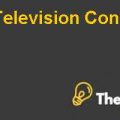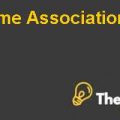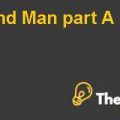
Case Analysis: Strategic Leadership at Coca Cola: The Real Thing Case Solution
Introduction
Leadership plays an important role in success of a company since leaders are the people who motivate people to achieve their targets, goals, and objectives. Moreover, there are two types of leaderships; the first type is the normal leadership under which the leader only motivates his fellows or followers in order to achieve the respective targets, while the second type is the strategic leadership, which is mostly followed in large organizations. (Riaz, 2008)
Strategic leadership allows the organization to respond to new opportunities and set targets accordingly in order to achieve those milestones and these type of leaders also motivate their followers to draw targets and objectives in short term to achieve the ultimate objective. This type of leadership plays a very crucial role in the organization, as it helps the company in responding to change and decides the growth of the company.
In addition, these types of leaders are also responsible for the growth and success of the company while they are also responsible for the side effects of any proposed strategy. Moreover, these types of leaders help the company to increase its core competencies in order to achieve competitive advantage over rivals. (ilm.com, 2010)
Furthermore, six components form the bottom line for strategic leadership since strategic leadership is useless until these milestones are not achieved. The first component of the strategic leadership is the creation of vision and mission; this is the first step, which guides the leader as well as the followers for what they are working. The next step includes the development of core competencies (those capabilities, which are not mentioned in the balance sheet of the company, but are those strengths of the company, which cannot be imitated by rivals easily). The third component is investment in human capital by training and facilitating the employees to achieve the ultimate objective.
Furthermore, the fourth step is to ensure sustainable organizational culture; since, without a perfect organizational structure, none of the visions can be achieved. Afterwards, the next job of strategic leadership is to ensure ethical practices and finally, the last step of strategic leadership is to ensure balanced organizational culture.
Leadership VS Strategic Leadership
There are several differences among both of the leadership approaches. However, the main difference, which is very helpful to understand the different aspects of both the approaches, is that under leadership, the leader can ask for any objective to be achieved at any level of the company. While strategic leadership belongs to the top management of the company. Therefore, it can be seen that strategic leadership is more crucial for any firm.
Leadership Styles
As highlighted in the case, there are three different types of leadership styles at strategic level of the company. The first style is the managerial leaders, the second type of leaders is visionary leaders, and the third category includes strategic leaders. However, these styles are not attached only with the top management of the company, but with the middle level management as well. (Riaz, 2008)
Managerial Leaders
These types of leaders only see themselves as the mediator of orders and rules from top management to middle and low-level hierarchy of the company. This type of managers motivate and encourage the front-core staff to achieve the goals and objectives set by them however, these leaders do not set the objective as per their desires or dreams and they do not do anything fancy in making changes from the orders received from the top management. In addition, these types of leaders are more focused towards the target competition in ways that are more traditional since they do not work to find out new and innovative ways to reduce the efforts for achieving maximum results. (Riaz, 2008)...................
This is just a sample partial case solution. Please place the order on the website to order your own originally done case solution.

